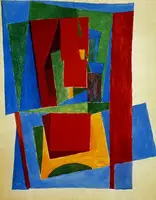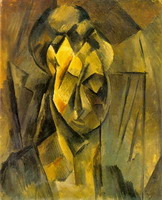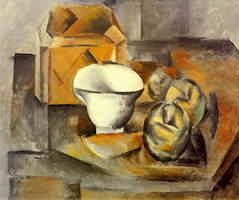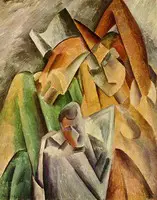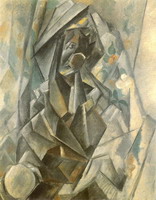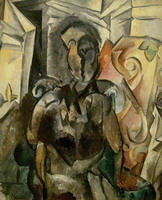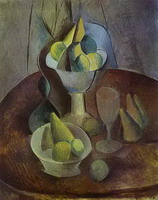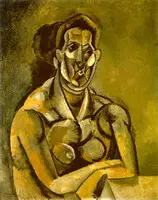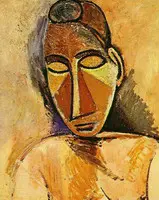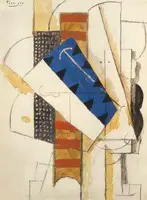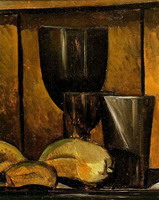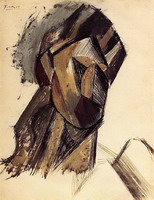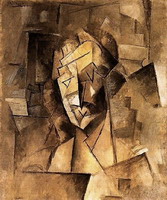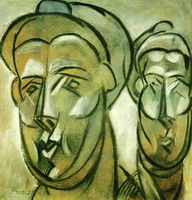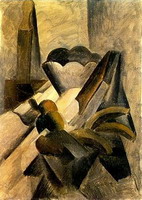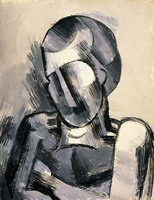
SEATED WOMAN
Femme assise
1909
Oil on canvas
81x65 cm
63.60 million
In May 1909, Pablo Picasso and Fernande Olivier went to Spain for the summer: through Barcelona, they travelled to Horta-de-Ebro (presently known as Horta-de-San-Juan), a remote village in Catalonia that could only be reached by riding a mule, and stayed there till September. The summer spent at Horta turned out to be one of the most significant periods in Picasso's creative work: a number of Fernande's portraits and several landscapes he painted then are now generally recognized as forerunners of cubism. The "Femme Assise" ("Seated Woman") painted in 1909 is one of a series of canvases which became a breakthrough in art: in it, Picasso first introduced a completely novel approach to representing form, later described as "analytical cubism".
The development of cubism is inseparably linked to a friendship between Pablo Picasso and Georges Braque. The two met in the winter of 1908 and, through a mutual exchange of ideas, forged a new visual language that greatly influenced the art of both. During the summer of 1909, as Picasso was staying in Horta-de-Ebro, Braque, too, left Paris in search of inspiration and solitude. In contrast to Picasso, who painted both landscapes and portraits during the period, Braque, working in La Roche-Guyon by the Seine, concentrated on landscapes, using a recurrent palette of greens and grays and creating complex, towering compositions.
In 1907, Picasso completed painting the now-famous "Les Demoiselles d'Avignon" ("The Girls of Avignon", currently in the New York Museum of Modern Art), one of the most influential pictures to be created in the 20th century. When working on it, he still followed the traditional practice of creating a number of preliminary sketches before attempting the final work; "The Three Women" (1908) follows the same principle. But in 1909, his method underwent a drastic change: instead of preliminary sketches, he painted a number of canvases in different formats, each of them a finished work, to illustrate the way his artistic idea developed.
Like other pictures created at Horta-de-Ebro, "Seated Woman" is characteristically made up of disjointed geometrical shapes; this gives the picture a three-dimensional look, creating the illusion of being able to view the woman portrayed in it from different sides – like a sculpture. As John Golding, a historian of Cubism, remarked, the pictures by Picasso executed in 1908 already had that "sculpture-like" quality, and some of those aim at showing the object they represent from several different points of view, combining several perspectives. This "three-dimensional" approach to painting is fully implemented in what Picasso did in 1909.
It's hardly surprising that after doing a thorough study of trying to render a three-dimensional object as part of a two-dimensional surface of a canvas, Picasso tried to apply those findings to sculpture. On returning to Paris in September 1909, he created the now-famous "Head of a Woman (Fernande)", believed to be the first Cubist sculpture.


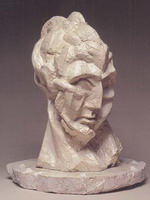
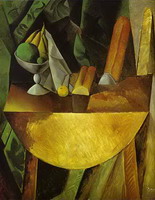
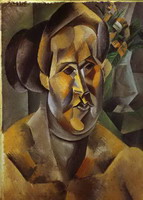
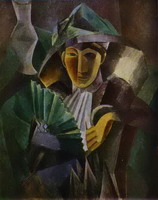
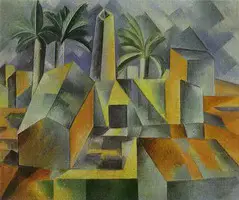
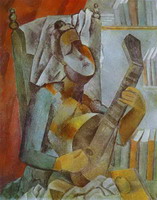
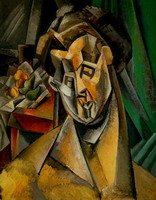
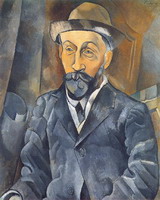
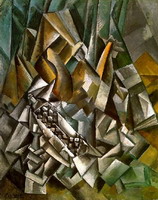
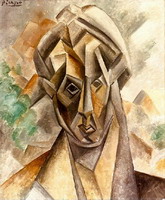
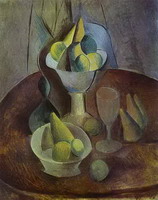
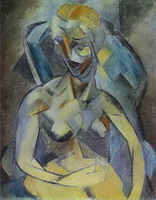

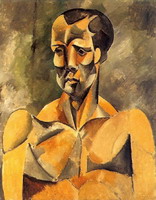


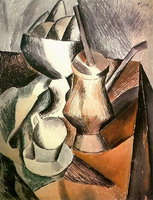
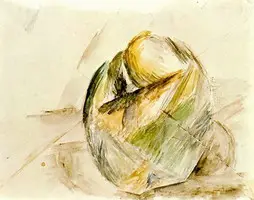

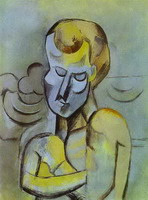

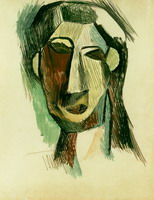
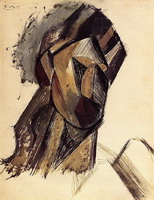
![Man with hat [Portrait Braque] Man with hat [Portrait Braque]](images/works/3263_s.jpg)
